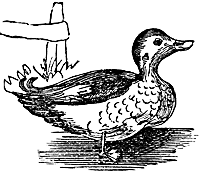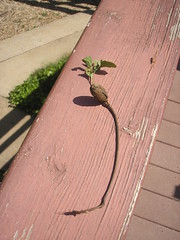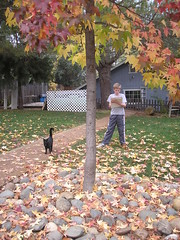I decided to share some links to pages that I use to help us draw in our nature journal. Several are links to coloring pages but I like their black line drawings that simplify an object so we can learn to draw them on our own in our journals. Make sure to check out all the links even if they are from a state or habitat other than one where you currently live. Many times there are animals, plants, and birds that you will have in your location too. I don't necessarily print the coloring book pages out and color them. We will use them as a guide to draw our own sketches of things we see in our Green Hour or for our nature journal.
Wildflowers:
Celebrating Wildflowers from the US Forest Service
These coloring pages are in PDF format so once you bring up the page, you can print out just the page you want and there is no need to print every page out on your printer.
Birds:
Feeder Birds Coloring Book from Cornell
These are not only coloring pages but could actually be used as notebooking pages for your nature journal. I print out the table of contents to keep in my notebook as a reference. This way I know what birds are included in the coloring book.
Trees:
Guide to Tree Sketching
I've shared this one before but it is worth listing again.
Flowers:
How to Draw Flowers and Plants
Step by step to various garden flowers
Mushroom:
There's Fun in Fungi
This is a PDF file. On page 5, there is a great illustration of a mushroom and its parts that you could use to easily draw your own mushroom.
Ducks and Geese:
3 Easy Steps to Drawing a Duck
A little more advanced but still great tips
Draw a Butterfly-Scientific Illustration
This is a fantastic page that teaches about how a scientist draws a specimen.
Various animals, birds, and reptiles:
Wildlife of New Mexico
This coloring book is worth a look. I think it is especially well done and many of the animals are found in other states as well. PDF format.
Wildlife of New Jersey
This is another really well done coloring book.
Wetlands Coloring Book
Lots of great ideas for drawing animals and scenes in this book.
I know I have one reader from Hawaii that participates in the Green Hour Challenge. This link is for her.
The Forest Jewels of Hawaii
Coloring pages of Hawaiian Birds
Hope there is something here that will help you with your endeavors to draw in your nature journal.
Barb-Harmony Art Mom
Thursday, May 1, 2008
Green Hour in the City or in a Small Backyard

I have been pondering over a question that someone asked about Green Hour Challenge #10. The commenter asked how I would suggest that they complete the challenges since they live in the middle of the city. I think you may have to be a little more diligent about your nature study but if you are up to the challenge I think it is well worth the effort.
Here is a section from the Green Hour website:
If you have trouble with noise, dogs, or traffic, try taking your walks at different times of day to see if it is any better. I know we live within earshot of a very busy highway. Sometimes I can hear the traffic clearly but at other times of day it is not even noticeable. We also live across the street from a school so during the weekday mornings and then during afternoon dismissal time, there is a lot more traffic and noise. We enjoy early mornings and early evenings relatively noise free.I live in an urban area. Can I still do this?
The Green Hour program focuses on helping families to experience nature -- with a lower case "n". Whether your backyard is a rural patch, suburban yard, or a small city lot, you can participate in Green Hour activities and discoveries with your child. And if you don't have a backyard, there most likely will be a nearby public park, community garden, nature center, or other green space accessible to you and your family.

Take advantage of any aspects of nature that you have on hand. The original commenter made reference to the wind blowing their napkins during their picnic. The wind could be a whole field of study during your nature time. Measure the speed, the direction, and the effects of the wind. Build on that for a study of the weather in your local area. Everyone has sky up above and you can watch the clouds and the sky each day as you go outside. I make it a habit to look up each time I go outside....just my quirky little habit.
Bugs were also mentioned in the question. Take a few minutes and observe the pesky little insects that disrupt your picnic. Each time you go out try to identify one insect and then record it in your nature journal. We focused on a study of insects last fall and I was surprised at how my attitude changed about them as the term went along. I was actually looking for insects by the time the nine weeks were up. If you have boys, insects may be just the ticket to their buying into a study of nature.
Adopt a tree in your neighborhood or a near-by park or near somewhere you go regularly like the library or the grocery store. Observe the tree each time you go by for changes and differences. We will be starting a year long tree study with the Green Hour Challenge (number 11) soon and this would be a great way to participate. There is nothing wrong with a little tree hugging every now and then.
I know several city dwelling families that are able to put up a bird feeder outside a window in their apartment. You might be surprised at what you attract right to your own window.

Most big cities that I have been to have some sort of central park area that could provide a way to have a study of nature. Ducks, geese, or pigeons can usually be found in urban areas and are covered thoroughly in the Handbook of Nature Study. If there is a pond, look for tadpoles, turtles, or minnows. Study the plant life around the pond or the algae if there is any.
How about a collection of leaves? Leaves are something easy to collect and then press or make rubbings of when you get home. Collect leaves on your nature walk, while running errands, or anywhere else you visit during your regular travels.

You could do a study of seeds by saving seeds from your meals. Oranges, apples, tomatoes, grapes, watermelon, or any other seeds you come across can be examined and drawn into a nature notebook.
Here is an important quote from the book Last Child in the Woods that I think may be helpful. Read the entire quote and then think about somewhere you might have close at hand that can provide you and your family with a place to get to know even if at first it seems like an "empty" lot or a "weed patch" along the sidewalk of a city street.
" Your job isn't to hit them with another Fine Educational Opportunity, but to turn them on to what a neat world we live in," writes Deborah Churchman in the journal American Forests, published by the nation's oldest nonprofit citizens' conservation organization. She recommends re-creating all the dopey, fun things you did as a kid: "Take them down to the creek to skip rocks-and then show them what was hiding under those rocks. Take a walk after the rain and count worms...Turn on the porch light and watch the insects gather.....Go to a field (with shoes on) and watch the bees diving into the flowers." Find a ravine, woods, a windbreak row of trees, a swamp, a pond, a vacant and overgrown lot-and go there, regularly. Churchman repeats an old Indian saying:"It's better to know one mountain than to climb many."I love that saying. The Green Hour Challenges were started to do just that very thing: Get to know what you have close at hand, right outside your doorstep. I admit that for some this is more of a challenge but I know you can do it.
If all else fails, you can always bring nature to you.
How about a balcony garden?
Balcony Gardening
Or a Square Foot Garden on your deck, patio, or roof?
Square Foot Garden
Table Top Garden
Complete instructions for growing a table top garden indoors
Hatch Some Butterflies Indoors
Butterfly Pavilion Kit
Maybe this will help those that are finding that the real challenge is to just find some sort of "green" to spend some time in. Keep me posted on how it is going for your family.
Barb-Harmony Art Mom
Nature Study vs. Nature Journals
I have come to the conclusion that the line between nature study and a nature journal is getting sort of fuzzy. You can have lots of nature study and not have a nature journal.
Don't let your lack of skill in drawing keep you from your nature study.
Nature walk=
Time outdoors+time spent in observation
Nature study=
Time outdoors+time spent in observation+time learning about your discoveries
Nature journal=
Time outdoors+time spent in observation+time learning about your discoveries+time recording your observations and thoughts
I am in no way discouraging nature journals but I am convinced that if you spend enough time in nature study, you will have more to write about in your journal.
Barb
Harmony Art Mom
Here are some interesting things I have seen in the past few months.

An acorn that sprouted in my garden box.

A beautiful moth on the grass early in the morning.
 A banana slug in the redwoods
A banana slug in the redwoodsNote: This entry is an old blog entry from my old blog.
Nature Study for Young People
"As soon as a child is old enough, he should keep his own nature notebook for his enjoyment. Every day's walk will give something interesting to add--three squirrels playing in a tree, a bluejay flying across a field, a caterpillar crawling up a bush, a snail eating a cabbage leaf, a spider suddenly dropping from a thread to the ground, where he found ivy and how it was growing and what plants were growing with it, and how ivy manages to climb."Here are some other thoughts on nature study from Charlotte Mason.
Charlotte Mason Volume 1 Home Education page 54.
- The skill of drawing should not be addressed in the nature notebook. pg. 55
- If the child is too young to write, the mother should do it. pg. 58
- Encourage your children to sit quietly and patiently and to look closely. pg. 57
- Some children are born naturalists but all have a natural curiousity that can be encouraged. pg. 58
- Most children will think of a million things to put in his nature notebook. pg 55
- It takes my children a long time to explore outdoors and they can do it very well without my interfering. I try to follow their lead and not rush them.
- I need to participate in the nature study myself. I try to model how to find a subject for my notebook and really observe the object.
- Drawing the object in the notebook is the last step in really "seeing" the object.
- There is no use in forcing a child to work in a nature journal. Regular exposure to the outdoor life will eventually lead to a desire to keep a record of what they see that interests them.
- Every nature journal is unique to the owner. I tend to record scenes in my journal. My daughter usually finds something pretty to draw. My boys find "things" to record in their journals like sticks, bugs, leaves, and seeds.
- Don't limit your journals to sketches. Sometimes we include photos in our journals. We have taken rubbings of bark or leaves. We have even taped small objects into our journals. Variety in our journals make them more interesting.
Have a great weekend.
Barb
Harmony Art Mom
Note: This is an old blog post from my old blog.
How to Make a Nature Journal

I thought I would share a quick little nature journal idea that we like to make for an outing or a special roadtrip.
Materials:
4 sheets of paper...any kind will do
hole punch
rubberband
twig

Fold the paper in half.


I thought I would share a quick little nature journal idea that we like to make for an outing or a special roadtrip.
Materials:
4 sheets of paper...any kind will do
hole punch
rubberband
twig

Fold the paper in half.

Punch two holes near the edge of the folded side of the paper.

Put the rubberband around the twig and then down through one of the holes.

Stretch the rubberband on the backside of the paper and up through the other hole.

Put the rubberband around the other end of the twig.
 There you have it.
There you have it.
Add decoration to the cover if you wish.
Enjoy,
Barb
This is an old blog post from my old blog.
Nature Study the Gentle Way

My suggestion: Study one tree, one bird, and one insect per school year.
Take it slowly.
Find one tree in your yard that you can study for a whole term.
- Find out what kind of tree it is.
- Make rubbings of the leaves and bark.
- Does it drop its leaves or does it stay green year round?
- Does it have any birds in it? Any insect holes? Hollows for critters?
- Can you climb up into it and see what the view is?
- Can you lay under your tree and watch the branches move in the breeze?
- Does it have blossoms, fruit, cones, seeds, or other objects to study?
- Do you see a nest in the tree?
- Is the trunk straight, crooked, twisted, rough, or smooth?
- Do the leaves or needles smell good? How about the bark?
- Watch and observe and narrate one thing at a time you will find that it is really not so hard. If you feel like recording the experience, put something on paper.
I don't look at outdoor time and nature study as one more subject I
need to plan and be ready for, I just let it unfold. If your children want to learn more about something they find while outdoors, gradually teach them to look things up for themselves in a good field guide or on your next trip to the library.
If you observe and identify one tree per year, over the course of your
child's education, you will have learned about 12 different trees...I
don't know about you but I have a hard time just listing 12 trees by name so if your child has become acquainted with 12 trees, they are far better off than many of us.
Slowly, gradually, gently....it works.
So I decided to follow my own advice and I went out and found a tree in my yard that I was interested in learning about. Turns out that after examining the leaves and the trunk of the tree, I discovered my tree is an Interior Live Oak. I know there are several varieties of oaks in my yard but I have never taken the time to identify them as any particular oak. My oak has leaves with pointy edges and they are glossy on both sides. It also has pointy acorns. While I was examining the trunk I discovered that one side of it has *lots* of woodpecker holes drilled into it. I have walked by this particular tree hundreds of times but have failed to notice the holes. Amazing....now I will on the watch to see if I can see the woodpecker that makes the holes. :)
I used a tree identification guide and my new tree field guide to help me. This whole process, including taking the photos, only took a few minutes. I plan on watching my oak to see if there are any other things that I can learn about it.
Interior Live Oak

Woodpecker holes in my oak tree

So I decided to follow my own advice and I went out and found a tree in my yard that I was interested in learning about. Turns out that after examining the leaves and the trunk of the tree, I discovered my tree is an Interior Live Oak. I know there are several varieties of oaks in my yard but I have never taken the time to identify them as any particular oak. My oak has leaves with pointy edges and they are glossy on both sides. It also has pointy acorns. While I was examining the trunk I discovered that one side of it has *lots* of woodpecker holes drilled into it. I have walked by this particular tree hundreds of times but have failed to notice the holes. Amazing....now I will on the watch to see if I can see the woodpecker that makes the holes. :)
I used a tree identification guide and my new tree field guide to help me. This whole process, including taking the photos, only took a few minutes. I plan on watching my oak to see if there are any other things that I can learn about it.
Interior Live Oak

Woodpecker holes in my oak tree

Acorn from my oak tree
One tree identified and now onto a bird.....
Barb-Harmony Art Mom
This post is an old blog post from my old blog.
One tree identified and now onto a bird.....
Barb-Harmony Art Mom
This post is an old blog post from my old blog.
Birdwatching 101 Attracting Birds To Your Yard
How do you attract birds to your yard for birdwatching? We love to watch birds and do so on a regular basis without ever leaving our backyard. We can watch from our window or our deck and see usually around 4-5 different kinds of birds each day. At sometimes of the year, we have a lot more than that and it is exciting to see a new kind in the feeders.
Here are some ideas to attract birds to your yard.








Here are some ideas to attract birds to your yard.
- Try a variety of birdfeeders. We made most of ours from scraps around the house and my boys love to hammer a nail and saw boards so this is a great project with a little supervision.
- We have some that are called platform feeders. The birds actually land on the feeder and eat from the seed in the tray. We have scrub jays (blue jays), tit mouses, towhees, dark eyed juncos, and house sparrows in these feeders.


- The second kind of feeders are the hopper kind of feeders where the bird lands on the perches and eat from holes in the sides of the feeders. Birds like house finches, goldfinches, and house sparrows like these types of feeders.


- Now for the more "natural" way to attract birds to your yard. We have chosen some plants for our garden area that seem to attract birds...especially hummingbirds. We planted butterfly bushes and trumpet vines on our arbor to attract butterflies but they seem to attract more hummingbirds. I am not complaining because they are beautiful and I say the more the merrier.




We have several varieties of sunflowers in our garden.....both planted with seed and those that came up from our feeder spillage. The yellow finches seem to like to eat the whole leaf of the the sunflower leaving just a little skeleton for us to look at.
We also have a fig tree in our yard and the scrub jays love to sit and peck at the fruit for an evening meal. They make a big mess but I'm glad someone is eating the figs. :)

So hopefully that gives you at least an idea of how to attract some birds to your own yard so that you can enjoy birdwatching from your window or backyard.
You may also be interested in visiting my page on feeding birds in winter....which would also apply at other times of the year as well: How To Feed Birds
We also have a fig tree in our yard and the scrub jays love to sit and peck at the fruit for an evening meal. They make a big mess but I'm glad someone is eating the figs. :)

So hopefully that gives you at least an idea of how to attract some birds to your own yard so that you can enjoy birdwatching from your window or backyard.
You may also be interested in visiting my page on feeding birds in winter....which would also apply at other times of the year as well: How To Feed Birds
Subscribe to:
Posts (Atom)

